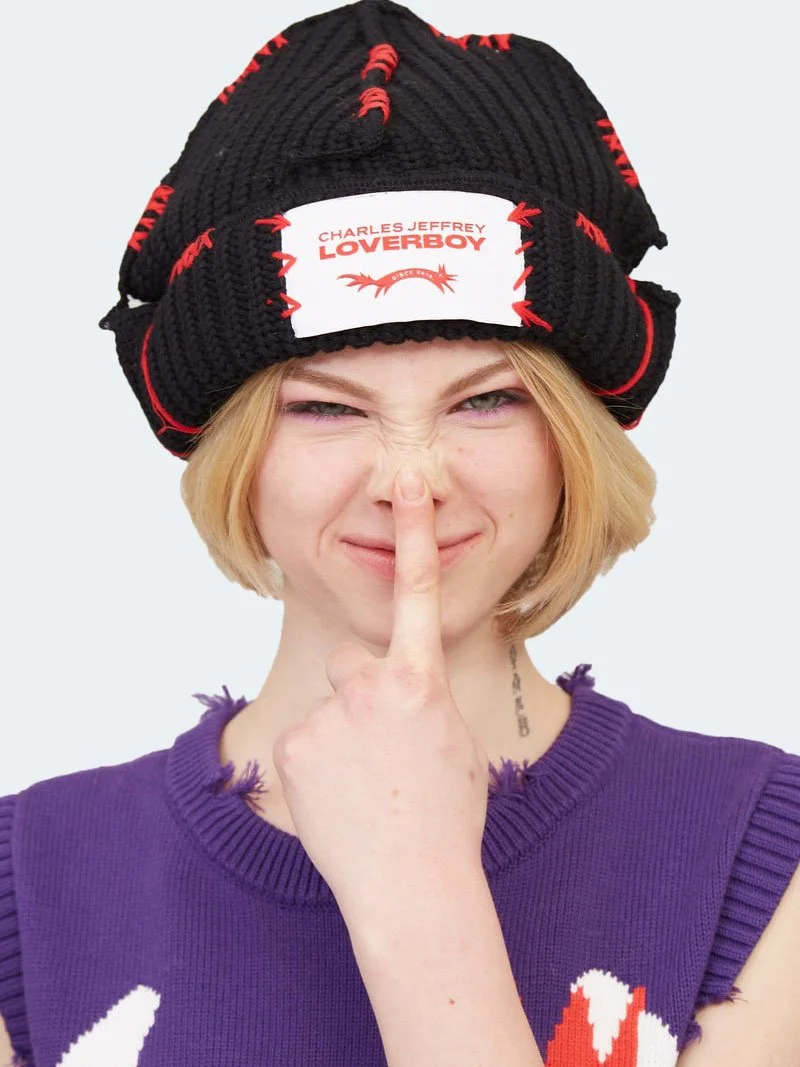The Loverboy Hat: A Symbol of Subversive Fashion and Youthful Rebellion

Introduction: The Hat That Started a Cultural Stir
In the saturated world of fashion accessories, where trends flicker like neon lights and fade just as quickly, the Loverboy hat has managed to make an indelible mark. Created by Charles Jeffrey, the hat is not merely a quirky statement piece but a cultural artifact. It represents a shift in how Gen Z and young Millennials express gender, identity, rebellion, and creativity through clothing. When you wear a Loverboy hat, you're not just covering your head—you’re embracing a wild, rebellious, and unapologetically bold spirit that defies the norms of mainstream fashion.
The Origins: From Nightclub Underground to Fashion’s Main Stage
The birth of the Loverboy hat is inseparable from the rise of Charles Jeffrey LOVERBOY, a British fashion brand that grew from the gritty dancefloors of East London to the runways of international fashion weeks. Charles Jeffrey himself began as a club kid—throwing costume-heavy parties under the name “Loverboy,” which evolved into a movement, then into a label, and eventually a philosophy.
The Loverboy hat began gaining traction as part of Jeffrey’s runway shows, where it served not just as an accessory but as an extension of the fantastical, punk-meets-fairytale aesthetic. The brand became known for its fusion of art, rebellion, and gender-blurring designs. The hats were often designed with exaggerated features: pointy ears, wide brims, long flaps, bold plaids, and moody tones that echoed rave culture, 18th-century aristocracy, and cyberpunk all at once.
Design Philosophy: Bold, Bizarre, and Beautifully Nonconformist
What makes the Loverboy hat stand out is its fearless originality. These hats are not minimal or neutral—they are riotous in both shape and color. Whether it’s the iconic plaid bunny ear hat or a furry, alien-inspired bonnet, each design is a visual challenge to the fashion establishment. The textures range from mohair and wool to fuzzy faux fur, and every stitch seems to vibrate with the energy of defiance.
The hat doesn’t care if you think it’s “too much”—in fact, that’s the whole point. It breaks away from the idea that fashion must conform to tastefulness or practicality. It thrives in being oddly elegant, uniquely jarring, and deeply emotive. There’s a childlike playfulness baked into the designs, but also a mature commentary on freedom of expression and the performative nature of clothing.
Symbolism: Wearing Identity Loud and Proud
At its core, the Loverboy hat is more than an aesthetic item—it is a wearable manifesto. It encapsulates themes of queerness, artistic liberation, and the act of dressing as self-expression rather than mere utility. To wear a Loverboy hat is to reject societal constraints, especially those around masculinity and gender presentation.
These hats are not gendered. Anyone can wear one, and that’s intentional. The designs often include elements that would historically be considered "feminine" (like soft colors, bunny ears, or decorative stitching), but they are recontextualized in a way that challenges these outdated classifications. The Loverboy hat essentially deconstructs the binary through wool and whimsy, proving that fashion can be a political statement, even when it looks like a costume.
The Loverboy Tribe: Who Wears These Hats?
The community that surrounds the Loverboy brand is as eclectic and fierce as the hats themselves. These are not items for the faint of heart or fashion conservative. You’ll often find these hats on the heads of bold, unapologetic creatives—people who turn sidewalks into catwalks. They are stylists, DJs, visual artists, performance poets, TikTok style influencers, and club kids continuing the lineage of rebellion through fashion.
The Loverboy hat has also garnered admiration from celebrities and style icons who lean into theatricality. Names like Harry Styles, Ezra Miller, and Michèle Lamy have been spotted championing the brand’s ethos. This wide appeal, from underground creatives to A-list disruptors, solidifies the Loverboy hat as a universal badge of self-love, defiance, and individuality.
Craftsmanship: Where Fantasy Meets Function
Though the designs are wildly imaginative, there’s nothing sloppy or half-baked about their construction. These hats are crafted with the care and precision one might expect from a couture atelier. Materials are chosen with intention: heavy Scottish wools, intricate knits, and exaggerated silhouettes all contribute to a piece that feels more like wearable sculpture than a mere accessory.
Even in its most outlandish designs, the Loverboy hat retains functionality. It keeps your head warm, after all. But it does more than that—it keeps your spirit daring. The attention to detail, from hand-finished linings to limited-edition dyes, makes each hat not just an object of style but a keepsake of creativity.
Fashion with a Cause: Defiance, Diversity, and Sustainability
Charles Jeffrey’s brand ethos is deeply intertwined with activism. The Loverboy label consistently speaks to mental health awareness, queer rights, and sustainable production practices. Many of the hats are made from deadstock materials or through environmentally-conscious processes, allowing the brand to merge flamboyance with ethical responsibility.
By purchasing or wearing a Loverboy hat, you’re aligning with more than fashion—you’re supporting a movement that values inclusivity, ethical expression, and radical kindness. This is fashion with purpose, not just pomp.
Influence and Legacy: From the Streets to the Runway (and Back Again)
It’s rare for a single piece—especially a hat—to have such cultural reverberations, but the Loverboy hat has managed just that. It’s not just seen during fashion week or editorial shoots. You’ll catch glimpses of it on college campuses, inside drag clubs, across Instagram reels, and even in art installations. It has become a sort of sartorial shorthand for people who want their outer appearance to reflect their inner eccentricity and defiance.
This resurgence of theatrical, statement headwear harks back to earlier times in fashion history—like the decadent headpieces of the ‘80s club scene, Vivienne Westwood’s punk crowns, or even the Renaissance courts. The Loverboy hat channels all of these energies and reimagines them for the 21st-century dreamer.
The Future of the Loverboy Hat: A Living Work of Art
As Charles Jeffrey continues to evolve his artistic vision, the Loverboy hat remains a central totem of his design legacy. Future collections will likely bring new variations—hybrid shapes, digital integrations, or even collaborative editions with other artists or brands. But the essence will remain the same: to challenge, to celebrate, and to provoke.
There’s little doubt that the Loverboy hat will one day take its place in the hallowed archives of iconic fashion accessories. But for now, it lives most authentically in the real world—on the heads of those brave enough to dream loudly, love fiercely, and dress without fear.
Final Thoughts: A Hat Like No Other
The Loverboy hat is not something you wear casually. It demands attention, and in doing so, it encourages you to step into the limelight of your own life. It’s for those who’ve never quite fit in, those who believe clothing can be a form of protest, and those who still believe in the magic of make-believe.
To wear a Loverboy hat is to say: I am here. I am different. And I am proud of that.
It’s not just a hat. It’s a declaration. A revolution wrapped in wool. A statement stitched in courage. And in a world that often demands conformity, the Loverboy hat offers something radical:


